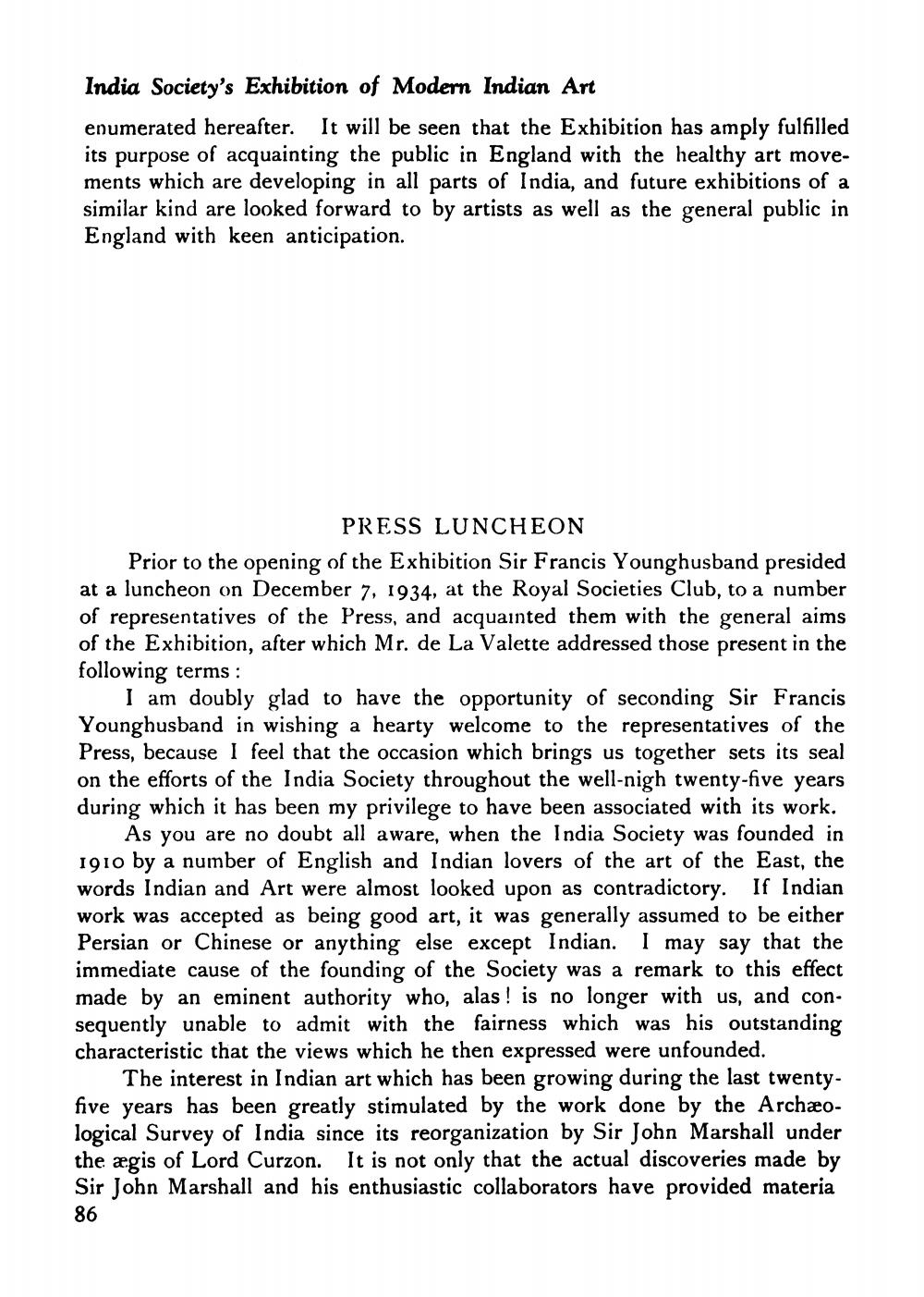________________
India Society's Exhibition of Modern Indian Art enumerated hereafter. It will be seen that the Exhibition has amply fulfilled its purpose of acquainting the public in England with the healthy art movements which are developing in all parts of India, and future exhibitions of a similar kind are looked forward to by artists as well as the general public in England with keen anticipation.
PRESS LUNCHEON Prior to the opening of the Exhibition Sir Francis Younghusband presided at a luncheon on December 7, 1934, at the Royal Societies Club, to a number of representatives of the Press, and acquainted them with the general aims of the Exhibition, after which Mr. de La Valette addressed those present in the following terms :
I am doubly glad to have the opportunity of seconding Sir Francis Younghusband in wishing a hearty welcome to the representatives of the Press, because I feel that the occasion which brings us together sets its seal on the efforts of the India Society throughout the well-nigh twenty-five years during which it has been my privilege to have been associated with its work.
As you are no doubt all aware, when the India Society was founded in 1910 by a number of English and Indian lovers of the art of the East, the words Indian and Art were almost looked upon as contradictory. If Indian work was accepted as being good art, it was generally assumed to be either Persian or Chinese or anything else except Indian. I may say that the immediate cause of the founding of the Society was a remark to this effect made by an eminent authority who, alas! is no longer with us, and consequently unable to admit with the fairness which was his outstanding characteristic that the views which he then expressed were unfounded.
The interest in Indian art which has been growing during the last twentyfive years has been greatly stimulated by the work done by the Archæological Survey of India since its reorganization by Sir John Marshall under the ægis of Lord Curzon. It is not only that the actual discoveries made by Sir John Marshall and his enthusiastic collaborators have provided materia
86




